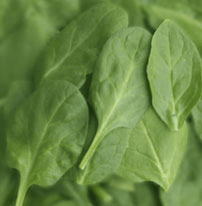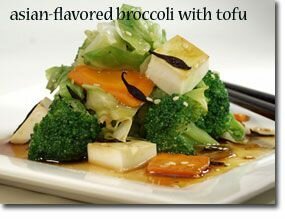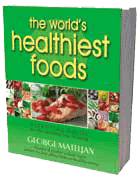---------- Forwarded message ----------
From: George Mateljan <gmf@mauigateway.com>
Date: Thu, Dec 20, 2012 at 7:19 PM
Subject: Asian-Flavored Broccoli with Tofu - Healthy Food Tip and Recipe
From: George Mateljan <gmf@mauigateway.com>
Date: Thu, Dec 20, 2012 at 7:19 PM
Subject: Asian-Flavored Broccoli with Tofu - Healthy Food Tip and Recipe
 | |
December 20, 2012
|
Forwarded from a friend? Sign up for your own copy of the
Weekly Newsletter and Healthy Food Tip and Recipe. |
healthy food tip and recipe
Today's Recipe
If you don't know what to serve for dinner tonight ... You can have a complete meatless meal in a matter of minutes when you add this Asian-inspired broccoli dish to your Healthiest Way of Eating.  Ingredients:
Printer Friendly Version of Asian-Flavored Broccoli with Tofu In-Depth Nutritional Profile for Asian-Flavored Broccoli with Tofu Healthy Food Tip Is sushi healthy? If so, which are healthiest? There are many different types of sushi, which are made with a wide variety of ingredients, including different types of vegetables, sea vegetables, and seafood. The basic ingredient for all sushi is rice; therefore, the other ingredients you choose to have on your sushi will determine its comparative nutritional value. Varieties of sushi that include only rice and vegetables offer nutrient-rich vegetarian options for sushi. For example, many restaurants offer sushi made with shiitake mushrooms, avocado, cucumber, burdock, umeboshi plum paste (a pickled plum suggested to have stomach health-promoting properties), and natto (a fermented soybean food that contains isoflavones and has been found to help promote bone health). Other varieties of sushi are wrapped in nori, a type of sea vegetable. Sea vegetables are rich in nutrients, including minerals (such as iodine) and phytonutrient lignans. Before we talk about the raw fish issue, it's worth adding in a distinction about the terms "sushi" and "sashimi." In Japanese, the word "sushi" refers to seasoned rice, not to fish at all. As I mentioned earlier, sushi may or may not contain fish. If it contains fish, the fish might or might not be raw. If the fish isn't raw, it may actually have been cooked. More likely, however, the non-raw fish in sushi will have been marinated in a liquid that includes an acidic ingredient like vinegar or lime juice. The term "sashimi" refers directly to sliced raw fish, often served with soy sauce and wasabi (green horseradish). When eating sashimi, or sushi topped with raw fish, a good approach is to enjoy it at a responsible restaurant, which has high quality purchasing and preparation practices. This is important so that you can reduce your risk of eating contaminated raw fish (which obviously is not healthy). Some of the health hazards connected with raw fish involve parasitic worms like tapeworm, flatworm, or roundworm. Roundworm (Anisakis simplex) may be the most problematic of the three parasites. If fish has been commercially frozen for at least three days at a temperature of 4蚌 (-16蚓), all of these worms-and their larvae-will be killed, rendering the fish more safe. (Your freezer at home most likely cannot reach a temperature this low.) It's also good to eat it with some wasabi, which has traditionally been revered for its antimicrobial properties. There are many types of fish that you can find in a sushi restaurant that contain great concentrations of nutrients. Omega-3-rich fish such as salmon, tuna, and mackerel are popular sushi options (don't forget that yellowfin or ahi tuna contains less mercury than albacore tuna). Pregnant woman and people with compromised immune systems may not want to take the risk of eating raw fish sushi at all and should discuss this with their healthcare provider. While all types of sushi can be healthy, you will receive more vitamins from sushi made with vegetables, more minerals from sushi that is wrapped in seaweed, and more protein (and omega-3s, depending on the type of fish) from sushi topped with fish. References: Ikeda Y, Iki M, Morita A, et al. Intake of Fermented Soybeans, Natto, Is Associated With Reduced Bone Loss in Postmenopausal Women: Japanese Population-Based Osteoporosis (JPOS) Study. J Nutr. 2006;136(5): 1323-8. Katsuyama H, Ideguchi S, Fukunaga M, et al. Promotion of Bone Formation by Fermented Soybean (Natto) Intake in Premenopausal Women. J Nutr Sci Vitaminol (Tokyo). 2004;50(2): 114-20 Katsuyama H, Ideguchi S, Fukunaga,M, et al.Usual Dietary Intake of Fermented Soybeans (Natto) Is Associated With Bone Mineral Density in Premenopausal Women." J Nutr Sci Vitaminol (Tokyo) . 2002;48(3): 207-15. Thompson LU, Robb P, Serraino M. Mammalian Lignan Production From Various Foods. Nutr Cancer.1991; 16(1):43-52. For more information this topic, see:
If you have any questions about today's Healthy Food Tip Ask George Your Question
What's New on the Home Page This Week
Breakthrough News
The Latest News about Spinach
George's Q&A
What is the best way to eat healthy during winter?  How to Order The World's Healthiest Foods, Essential Guide for the Healthiest Way of Eating. See sample pages and find out how to place an order for our new book. The special offer of free shipping is still in effect. We are already getting wonderful feedback which we want to share with you, so we're posting it on the bottom of our home page. Enjoy the book and let us know how you like it. How to Order The World's Healthiest Foods, Essential Guide for the Healthiest Way of Eating. See sample pages and find out how to place an order for our new book. The special offer of free shipping is still in effect. We are already getting wonderful feedback which we want to share with you, so we're posting it on the bottom of our home page. Enjoy the book and let us know how you like it. I love the book, and as a dietitian I believe in whole foods. I hope I can use your concepts and recipes in private practice to guide people to good health. I know many dietitians who use your book in teaching clientele. - Linda | |
| George Mateljan Foundation, PO Box 25801, Seattle, Washington 98165 Unsubscribe | Change Subscriber Options |
--
Jorge U. Saguinsin
"Be the best, do your best, expect the best"


0 comments:
Post a Comment